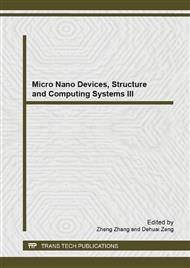p.73
p.79
p.84
p.89
p.95
p.101
p.106
p.115
p.121
Finite Element Analysis on the Structure Strength of Air Cushion Vehicle
Abstract:
Air Cushion Vehicle is widely used in the field of military and civil ship in recent years for its characteristic high speed and amphibian. Since the yield strength of aluminum sheet with stiffeners is relative low after welding, to ensure air cushion vehicle has significant strength under normal load and to avoid severe damage under adverse sea conditions, model loading test and theoretical prediction is used to determines the design values of wave loads, and FEM analysis with direct calculation method under the different load cases including the total longitudinal strength, cross-strength, torsional strength and shear strength, and then getting the structural response results. This essay gives several suggestions for the design according to the calculated results of stress and its deformation characteristics.
Info:
Periodical:
Pages:
95-100
Citation:
Online since:
April 2014
Authors:
Price:
Сopyright:
© 2014 Trans Tech Publications Ltd. All Rights Reserved
Share:
Citation:


